MARS Mariner IV NASA's Vidicon Tube Camera (First MARS close-up photos 1965)
030521 Like and subscribe. This is an archive, check the link in the end if you are owner. MARS Photos taken by Mariner IV in 1965 were the first close-up Martian photos ever taken. The Mars photos were taken with a specially designed on-board camera system and digital tape recorder that sent Mars photos back to earth. This video presentation includes rare film and photos of the 1964-1965 Mariner IV mission adventure, including behind the scenes design work and thoughts of the original scientists on the project. Shows how they made the specially designed vidicon based camera and the challenges they faced protecting it on its journey to Mars. Run time: 18 mins. Color and sound.
Portions adapted from the film: “EXPERIMENT: Close up of Mars: The Story of a Scientific Search”
1966: stock footage available from Periscope Film
http://www.periscopefilm.com
With Special Thanks to
- National Aeronautics and Space Administration
- Jet Propulsion Laboratory, Pasadena, California
MISSION FACTS Launched by NASA on November 28, 1964 and performed first MARS flyby on July 14, 1965. Mariner 4 contained a specially designed camera with a digital tape recorder which successfully captured 21 digital pictures of the surface of mars. Mariner IV used a vidicon-based television camera tube developed and manufactured by General Electrodynamics Corporation (“GEC”). GEC had developed a special selenium based compound as the target material in the vidicon. This was a very unique design.
A specially built camera system converted photographs into digital information, which was then transmitted to earth to provide the closest views of the planet Mars ever taken. The signals for these images were recorded and stored in digital form on a 300 foot, continuous-loop magnetic tape recorder until the earth station requested transmission after the spacecraft has appeared from behind Mars and was detectable to earth based antennas.
On July 15 Mariner 4 passed within 6117 miles of Mars, spending 25 minutes observing the Mars surface. The Vidicon-based television camera captured 21 full pictures. Each photo covered an area of about 77 square miles. It took about 8 hours to transmit each image back to Earth. Mariner IV operated for a total of 7,375 hours since it was launched. Mariner 4 continues to be regarded as one of NASA’s most successful missions
References:
NASA Technical Report: “Mariner 4 pictures of Mars” By Allen, J. D.; Leighton, R. B.; Murray, B. C.; Sharp, R. P.; Sloan, R. K, Jet Propulsion Laboratory, California Institute of Technology, Pasadena, California, 1967 (Archive.org)
https://archive.org/details/nasa_techdoc_19680006637/page/n5/mode/2up
Article: “Television in Space,” by Leslie Solomon. Associate Editor, “Electronics World,” 1965. https://www.rfcafe.com/references/electronics-world/television-space-august-1965-electronics-world.htm
NASA MARS Helicopter photos
https://mars.nasa.gov/news/8906/nasas-mars-helicopter-survives-first-cold-martian-night-on-its-own/
NASA Mariner Mars Missions Fact Sheet
https://mars.nasa.gov/internal_resources/809/
https://rumblevideoarchive.wordpress.com/
-
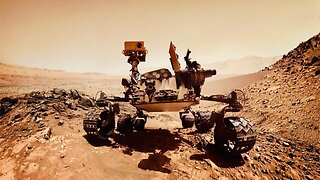 58:54
58:54
Knowledge Land
1 year agoThe Struggle to Explore Mars - A Spacecraft Graveyard - Full Documentary
452 -
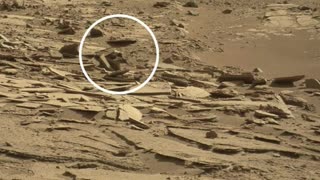 0:46
0:46
Travel And Look
1 year agoPictures of Mars, taken from the official NASA website, what do you think?
101 -
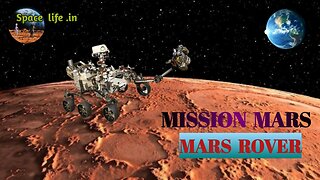 8:36
8:36
SPACE LIFE .IN
1 year agoMission Mars by Mars Rover || মঙ্গল অভিযান |
104 -
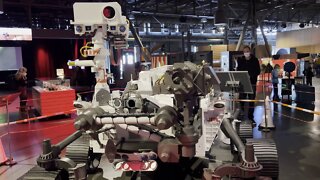 2:03
2:03
Travelling Around the World
2 years agoPerseverance Mars Rover at the Exploratorium in San Francisco (4K)
18 -
 2:32
2:32
Mr
4 months ago🚀 Red Planet Rendezvous: NASA's Epic Mars Missions Unveiled 🌌🔴
12 -
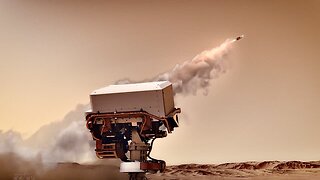 1:42
1:42
Knowledge Land
1 year agoSending Mars Rocks Back To Earth - Great NASA Animation
58 -
 2:03
2:03
All Things Future, Tech & Humanity
1 year ago $0.03 earnedNASA Put A Helicopter On Mars And The Footage Is Out Of This World
10 -
 1:54
1:54
KnowledgeOrb
1 month agoLatest Pictures Video of MARS🌕KO #4
31 -
 2:28
2:28
AndreCorbeil
1 year ago'Mars' On 'Earth' 'Devon Island Canada' 'Astronaut Canyon' Is Where 'NASA' Gets 'Mars' Rover Footage
2.76K8 -
 2:12
2:12
NASA Videos Plus
9 months agoHow does a Rover take a selfie on Mars?
14